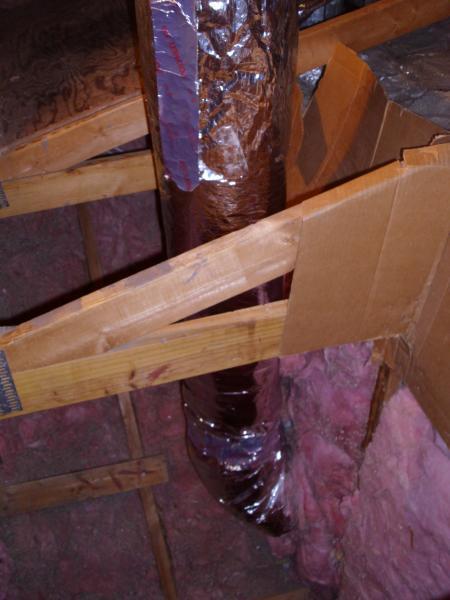
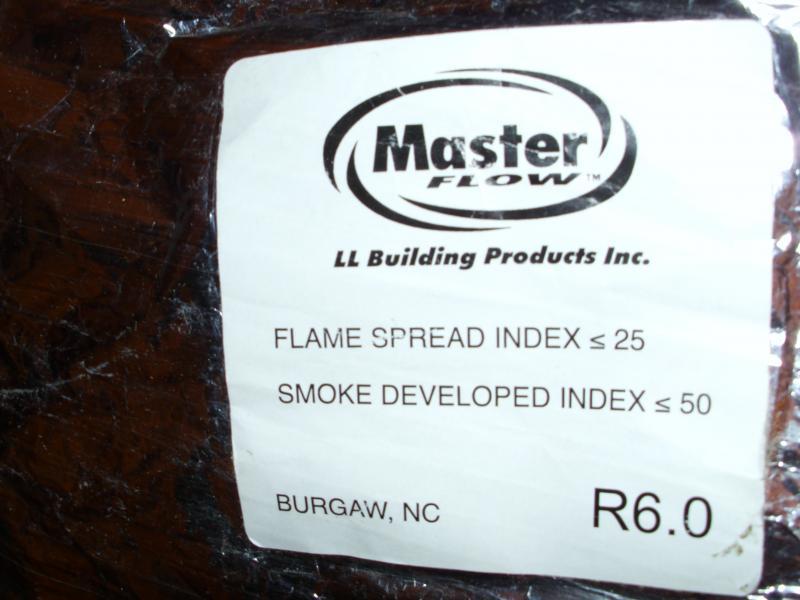
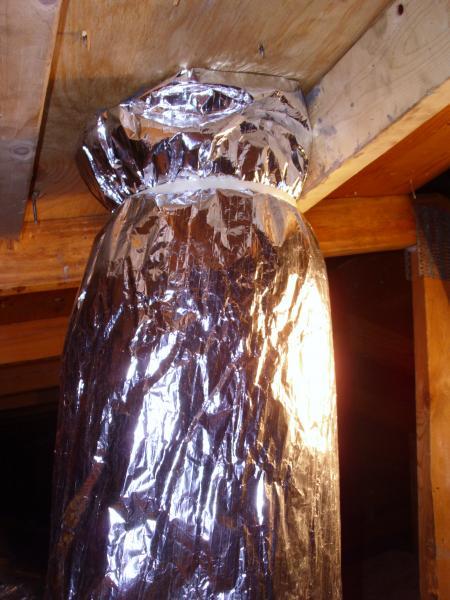
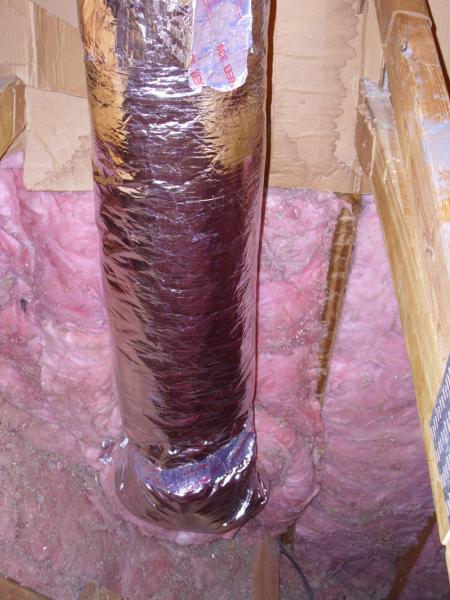 Installed in this matter…From Microwave 3 1/4″ x10″ thru wall into a attic stair well opening into 3 1/4″ x 10″ / 6″ 90 (upward to roof ) into 6″ duct into 6″ 90 (set to roof pitch 3 /12) into BD6″ (Damper) into APV6″ Aluminum low profile roof vent with coller. All metal duct fully insulated with R6 fiberglass / foil duct sleeve. All seams / joints sealed with fireproof caulk before sleeve applied. Sleeve sealed at wall, & seams with foil tape & slip tied at ends.
Installed in this matter…From Microwave 3 1/4″ x10″ thru wall into a attic stair well opening into 3 1/4″ x 10″ / 6″ 90 (upward to roof ) into 6″ duct into 6″ 90 (set to roof pitch 3 /12) into BD6″ (Damper) into APV6″ Aluminum low profile roof vent with coller. All metal duct fully insulated with R6 fiberglass / foil duct sleeve. All seams / joints sealed with fireproof caulk before sleeve applied. Sleeve sealed at wall, & seams with foil tape & slip tied at ends.
Stair well opening in attic fully insulated. Walls & ceiling area with fiberglass bats, paper side to inside (warm side) attic ceiling 10″ blowen cellulose with radiant reflector over.
Confused still getting some condensation at lower point… bottom of 3 1/4″ x 10″ fiberglass feels wet when touching the foil, feels like its puddlng there in the fiberglass with the foil holding it in. Wondering if condensation is running down the 6″ duct & puddling at the lower end. Haven’t opened it up yet because what to do next ??
If this is the case I’m lost at what to do next to stop the condensation? Sure though I done a super job at sealing / insulating with the right stuff. Dosen’t seem like this should be such a dificult job. ???
Sending some pic’s…Your thoughts would be appceated thanks.
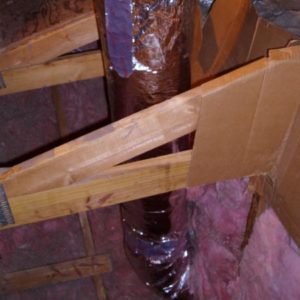

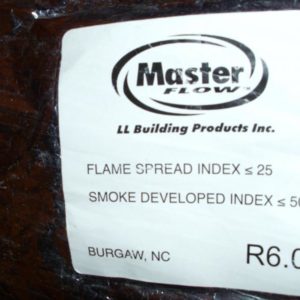
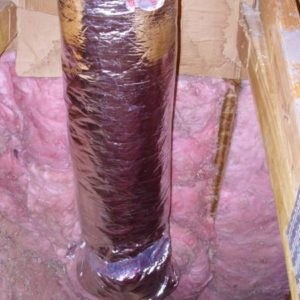



















Replies
dog
When do you use it and do you let it run for a while afterwards.
What type of use-boiling water, saute'ing, other?
Most cooking drives off water, except maybe something like bacon or stirfry............so water goes up the tube. If it's all vertical, then there's nowhere to go but down, unless the fan is left on to drive more moisture out the roof boot.
How long is the vertical?
What's the roof vent look like-I'm used to a boot, no collar-the collar to me suggests a vertical pipe?
I think it would be a simple matter to up the insulation R value to something in the 20's... frame a box around the pipe and lay in three vertical batts of R19 over your existing for instance. This combined with leaving the fan on should reduce the condensation on the walls.
Seems to me that if there were really substantial amounts of water in there it would not stay in and there would be signs of water seepage on nearby surfaces. In any event, you can slit open the insulation and check, then reseal it with *real* duct (not duck) tape or sheathing tape.